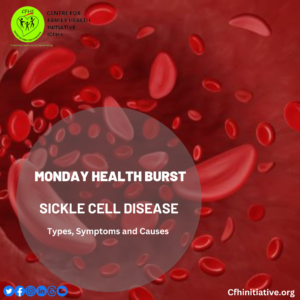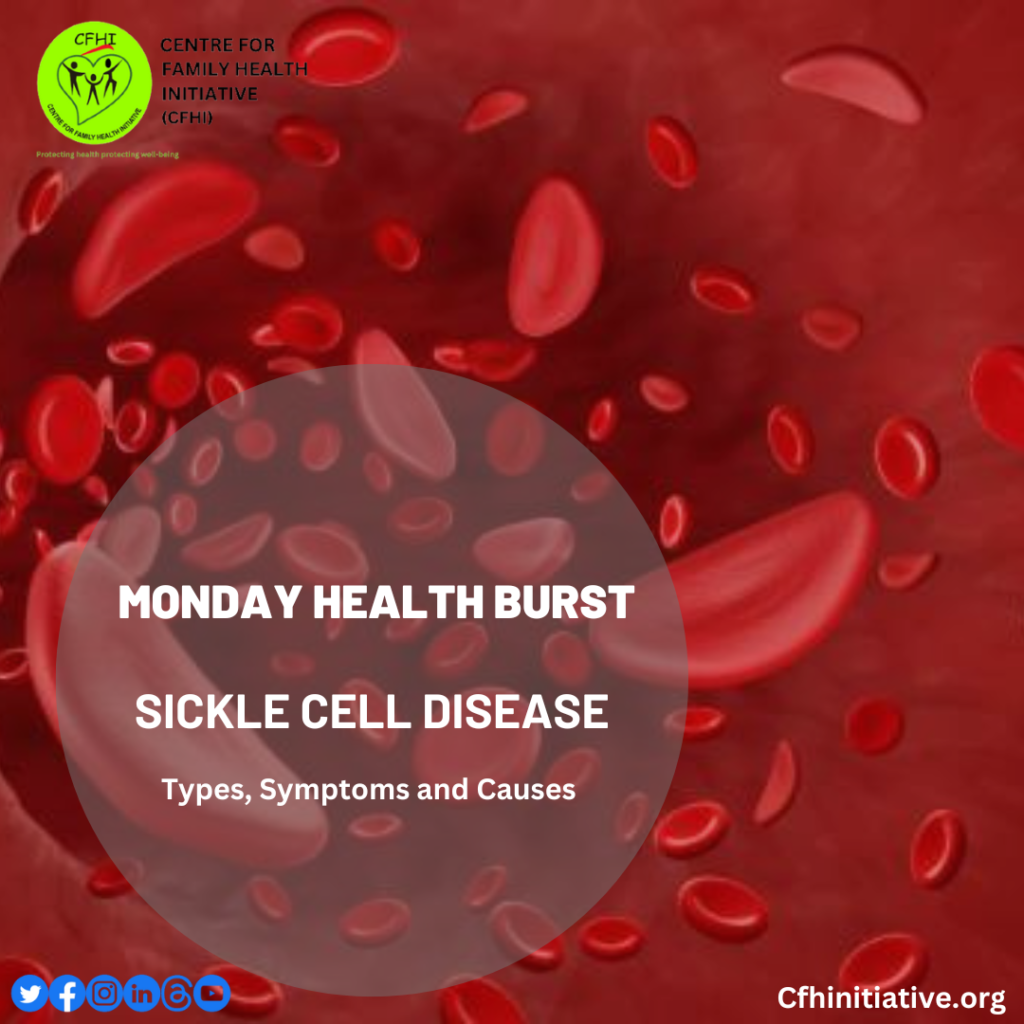Sickle cell disease (SCD) is a genetic disorder that alters the structure of hemoglobin, a protein in red blood cells. Sickle cell disease is caused by inheriting abnormal hemoglobin genes from both parents. It produces abnormal hemoglobin (HbS) that can cause red blood cells to become rigid and take on a characteristic “sickle” shape under certain conditions, leading to various complications. The underlying genetic mutation affects the synthesis of hemoglobin.
Around 50 million people worldwide have SCD, with 4-6 million of those living in Nigeria (where 1 in 4 people have the sickle cell trait), which is the disease’s epicenter. Globally, around 300,000 infants are born each year with a new SCD diagnosis.1
There are numerous varieties of SCD, but the most common is sickle cell anemia (HbSS). The genes a person receives from their parents determine the particular type of SCD that person has. SCD patients inherit genes that contain the instructions or “code” for faulty hemoglobin.2 The types include:
HbSS
People with this type of SCD inherit two genes—one from each parent—responsible for hemoglobin “S.” The defective hemoglobin, hemoglobin “S” makes red blood cells stiff and sickle-shaped. This condition is known as sickle cell anemia and is usually the most severe type of SCD.
HbSC People with this kind of SCD inherit the “S” gene for hemoglobin from one parent and the “C” gene from the other parent. Typically, this is a less severe variation of SCD.
HbS beta thalassemia
People who have this form of SCD inherit a hemoglobin “S” gene from one parent and a gene for beta thalassemia, another type of hemoglobin abnormality, from the other parent. There are two types of beta thalassemia: “zero” (HbS beta0) and “plus” (HbS beta+). Those with HbS beta0-thalassemia usually have a severe form of SCD. People with HbS beta±thalassemia tend to have a milder form of SCD.
Other types are the HbSD, HbSE, HbSO: These are rare variants with different combinations of abnormal hemoglobin genes.
Symptoms:
• Chronic anemia: SCD leads to a shortage of red blood cells, causing fatigue and weakness.
• Pain crises: Intense, episodic pain due to blocked blood vessels, often in the bones, chest, abdomen, or joints.
• Organ damage: Repeated sickling of cells can harm organs like the spleen, kidneys, and liver.
• Infections: Increased susceptibility to infections, particularly in children.
• Stroke: A risk, especially in children with SCD.
• Delayed growth and development in children.
• Hand-foot syndrome: Swelling and pain in hands and feet, common in infants with SCD.
Prompt diagnosis and comprehensive care are pivotal in enhancing the lives of those with SCD, involving pain management, blood transfusions, medications, and, in severe cases, bone marrow or stem cell transplantation. Raising awareness and promoting early intervention are essential steps towards alleviating the burden of this disease on affected individuals and their families.
Monday Health Burst is an initiative of CFHI to address issues of basic health concern. Join us every Monday on all our social media platforms for more episodes.
REFERENCES:
1. Ogbonna Collins (et al., 2022) in the work entitled “An overview of sickle cell disease from the socio-demographic triangle – a Nigerian single-institution retrospective study.
https://www.ncbi.nlm.nih.gov/pmc/articles/PMC9120745/
2. Centers for Disease Control and Prevention
https://www.cdc.gov/ncbddd/sicklecell/facts.html
#MondayHealthBurst
#SickleCellAwareness #PreventionIsKey #StayStrong


